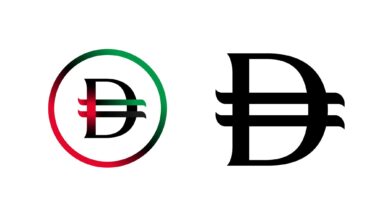Central Bank of Lebanon reiterates intention to launch Central Bank Digital currency

In a recent speech given by the Governor of Lebanon’s Central Bank Riad Salameh, he announced that the Central Bank is working on a Central Bank digital currency ( CBDC) whilst it has legalized peer to peer payment platforms.
Riad Salameh carried out a live video speech in response to recent allegations made against him by newly appointed Lebanese Prime Minister Hassan Diab given the current fall in the value of Lebanese lira against the US Dollar as well as the rise in prices of basic commodities and products.
While most of the speech centered on defending against these allegations as well as explaining why Lebanon fiscal situation is as it is today, who to blame and what has been done by the central bank to mitigate these issues, the governor also reiterated his intent to launch CBDC and other digitization efforts.
Central Bank Governor Riad Salameh discussed various new digital initiatives and solutions being worked on to assist both businesses as well as the financial sector in Lebanon. The first solution is the recently announced Oxygen platform that will create a marketplace for trade finance and investment funds need for the manufacturing and agriculture sector. Salameh stated, “The central bank has already allocated 100 million USD for this platform and we are working to raise 650 million more to be used for the purchase of raw material for the agriculture and manufacturing sector in cooperation with Ministry of Manufacturing in Lebanon.”
Another project being worked on by Central bank is a Financial Marketplace where Lebanese companies either inside Lebanon or outside can utilize to raise funds via investment in their stocks or bonds. As Salameh stated, “We are building a regulated Financial Marketplace, on an electronic platform, which will be finalized soon for the trade of stocks and bonds of Lebanese companies.” Questions remain as to whether these stocks could be in the form of digital asset marketplace? Is working being carried out to tokenize these assets?
During his speech as well he reiterated that the Central Bank will be launching a Central Backed digital currency that would be used to create a more cost effective method for Lebanese to make payments. As he stated, ” We intend to launch a central bank digital currency to make payments more affordable to Lebanese.” Today more than 18 central banks across the globe are studying the implementation of Central Backed digital currencies. This includes studying the impact of digital currency for monetary policy and financial stability. Central Backed digital currencies are different from cryptocurrencies even though both are based on blockchain technology. CBDCs are traditional money, but in digital form, issued and governed by a country’s central bank, whereas cryptocurrencies are decentralized.
The bank of International Settlement recently published a survey that found that about 80% of the central banks are engaging in some sort of work in this area, with half looking at both wholesale and general purpose CBDCs. About 40% of central banks have progressed from conceptual research to experiments or proofs-of-concept while another 10% have developed pilot projects.
According to an article written by Carlo De Meijer in Finextra , “CBDCs could address problems like inefficient payments that cryptocurrencies seek to solve, while maintaining state control over money. Central banks think CBDCs could make payments systems more efficient, reducing transfer and settlement times and thus promoting economic growth. Other advantages could include making available efficient, secure and modern central bank money to everyone, and strengthening the resilience, availability and accessibility of retail payments. This is especial true for the countries with underdeveloped banking systems, and/or without a secure and efficient payment system.
Meijer adds in his article, “Next to that CBDCs could allow relaxing the so-called zero-lower bound constraint on nominal interest rates as negative interest rates can be applied to CBDC. If digital cash is used to completely replace physical cash, this could allow interest rates to be pushed below the zero-lower bound, which could promote macro-economic stability. CBDC could also widen the range of options for monetary policy. Variable interest rates on CBDC would provide for a new, non-redundant monetary policy instrument that would allow improving the overall effectiveness of monetary policy. “
Salameh also in his speech announced that Lebanon had already allowed for Peer to Peer payments. This is effective if coupled with a Central Bank Digital currency. According to the Bank of International Settlements, “Central bank digital currencies (CBDCs) promise to provide cash-like safety and convenience for peer-to-peer payments. To do so, they must be resilient and accessible. They should also safeguard the user’s privacy, while allowing for effective law enforcement. Different technical designs satisfy these attributes to varying degrees, depending on whether they feature intermediaries, a conventional or distributed infrastructure, account- or token-based access, and retail interlinkages across borders. BIS report sets out the underlying trade-offs and the related hierarchy of design choices.”
Regardless, Central Banks especially Lebanon’s Central Bank will need to analyze the pros and cons of a CBDC (Central Bank Digital Currency) especially given the current financial, monetary and economic situation facing Lebanon. The CBDC could be a much needed solution depending on its use case.





